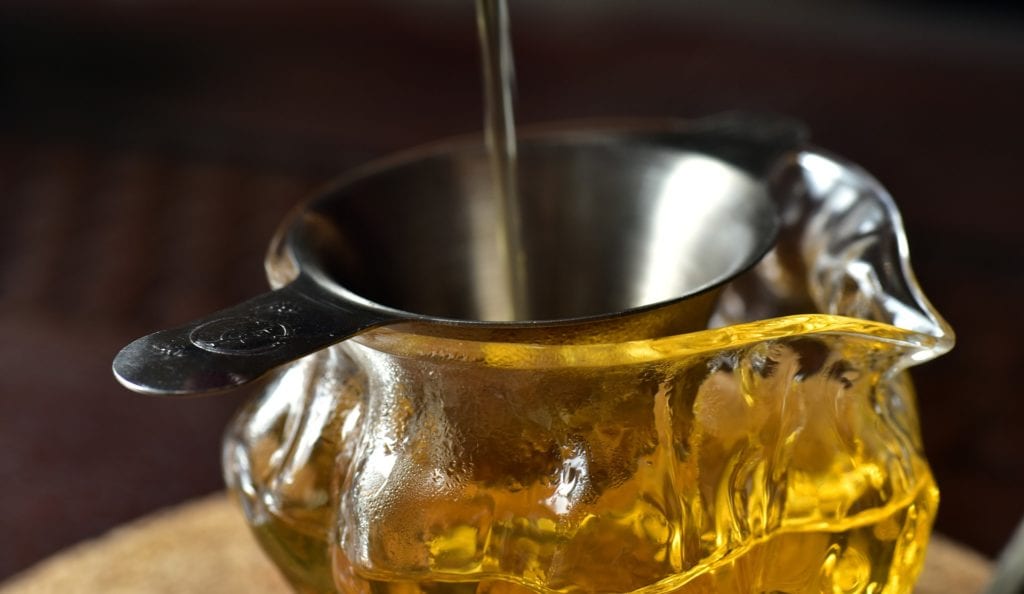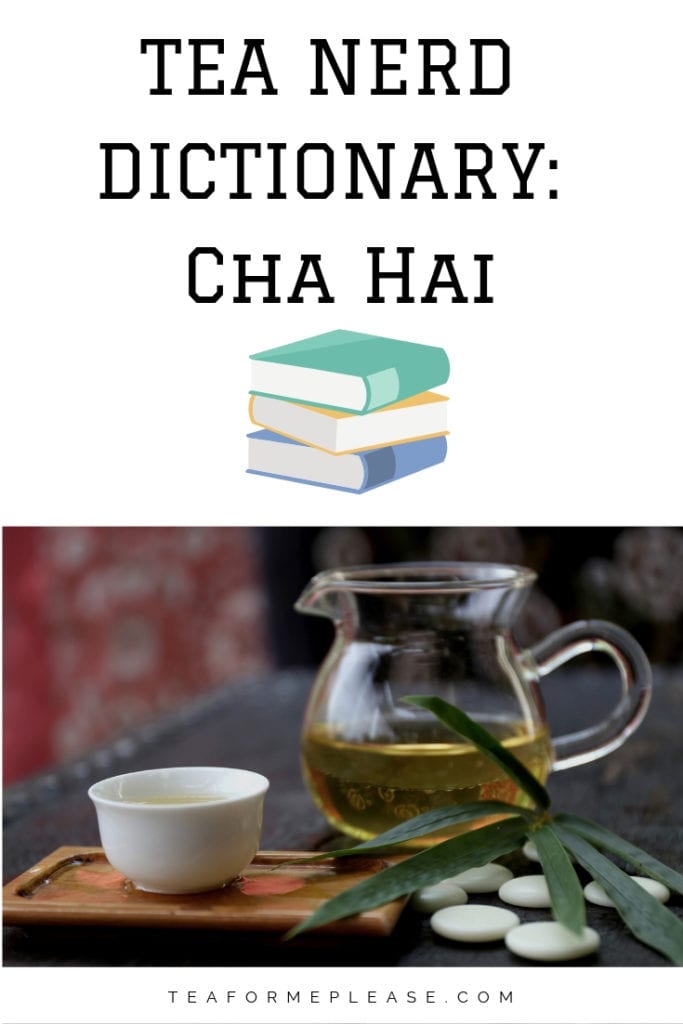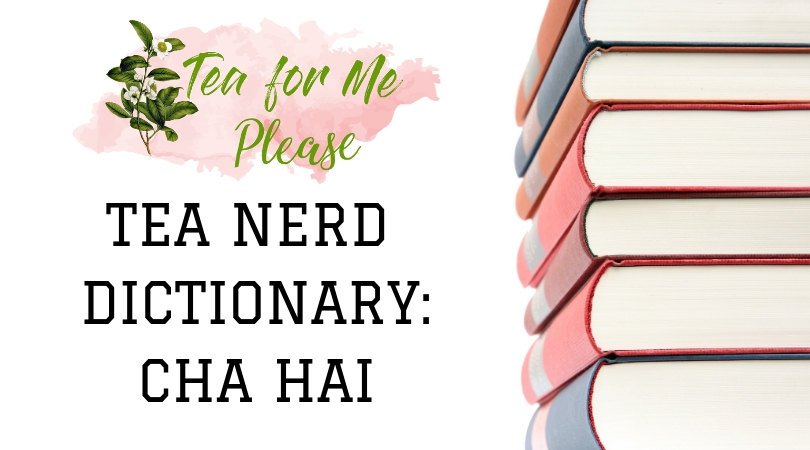It has been a while since I’ve written something for my Tea Nerd Dictionary series. I thought I would get back to it with a focus on one of my favorite pieces of teaware. Cha hai, gong dao bei, sharing pitcher, fairness cup. This gongfu tea tool goes by many names. Whatever you choose to call them, the purpose is to make it easier to serve tea to multiple people.

What are they?
A chai hai is a container that brewed tea is decanted into when using the gongfu method of brewing. The most common materials are glass, porcelain, or some kind of pottery. They are usually smaller in size as they only need to accommodate the amount of liquid held in a gaiwan or teapot. Chai hai come in a variety of shapes and designs but most are slightly more narrow at the top than they are at the bottom. This is to allow a strainer to sit in the opening without falling through.
What are they used for?
If you are filling four teacups with a yixing teapot, the first and last cups will have very different strengths. This is because the leaves have been in contact with the water for a longer period of time. Pouring the tea into a cha hai before serving ensures that each cup will have an even and consistent flavor.
Cha hai are not entirely necessary for solo tea sessions but they do have some practical purposes. Gongfu tea usually calls for cups with a volume that is much smaller than the brewing vessel. The leaves will continue to steep if only one cup of water is poured out. This results in an increasingly bitter and unpleasant taste. Using a cha hai allows the tea drinker to entirely empty the vessel of water. They also make it easy to filter the tea before drinking, removing leaf particles and foreign objects.

Where can you find them?
Selecting a chai hai is very personal and not everyone wants the same features. I prefer glass pitchers with a handle because they are easier to pour and I can enjoy the color of my tea. Others might prefer something with thick walls in order to have better heat retention.
Cha hai don’t have to be expensive to get the job done. Simple glass will pair nicely with just about anything but you can also find one that was hand painted by a talented artisan. They are relatively easy to find online but I don’t often see them in tea shops.
These are some of my favorite shops for this kind of teaware:
What if I don’t have one?
No worries! You can easily improvise using something that you already have on hand. Creamers, like those that come with fancy tea sets, and gravy boats make excellent substitutes. I even have a few tea friends who prefer to use graduated beakers. You’ll definitely want something with a spout but otherwise, anything goes.
Do you have a cha hai? Share a picture of it in the comments below!


I was wondering what cha hai was when I saw the title of your post because gong dao bei is a lot more widely used in Singapore! I wonder how certain terms become popular (like cha hai vs gong dao bei, or boba tea vs bubble tea)
That is so interesting. Here in the U.S., I think it has a lot to do with where you first learn about tea and teaware. I watched videos since there weren’t any tea shops around at that time. They called it a cha hai and I only learned the term gong dao bei later.
Hi Nicole and Eustacia. The cha hai was “invented” in Taiwan during the 1990’s. Literally translated cha hai means “tea sea.” This is what the vessel is called in Taiwan.
The term gong dao bei (fairness cup) is of Chinese origin and developed after a much more ritualized gong fu brewing method was re-imported to China from Taiwan following the Cultural Revolution. I don’t know why this term developed but it may have something to do with Straits politics. Gong dao bei is the term used in China.
I suspect that the gong fu practice was introduced to Singapore from China and that is why the term gong dao bei is used.
In the United States we hear both terms but most often I hear “fairness cup” in English. My Taiwanese friends here or in Taiwan don’t know what one is talking about when the term gong dao bei is used.
Best place to buy a cha hai is thrift shops. Except for my gaiwans and tea filters, all my teaware has been bought at Goodwill and Salvation Army.